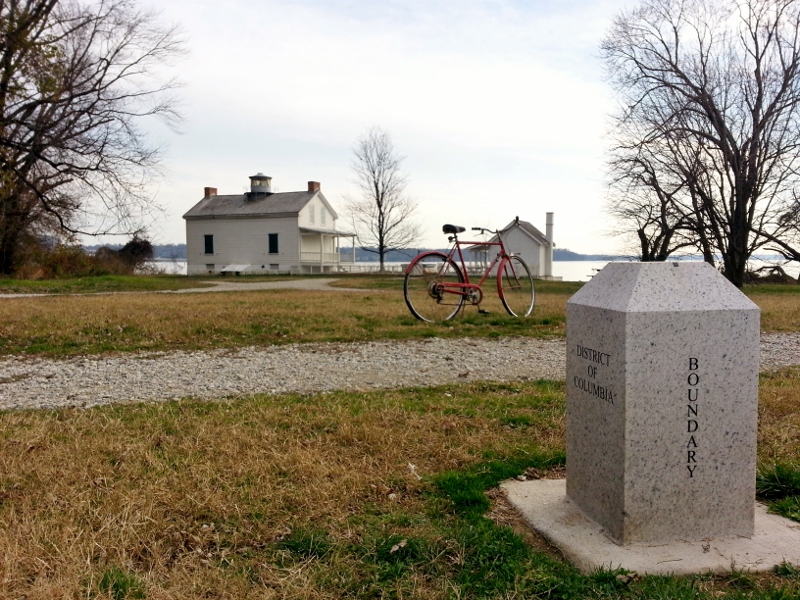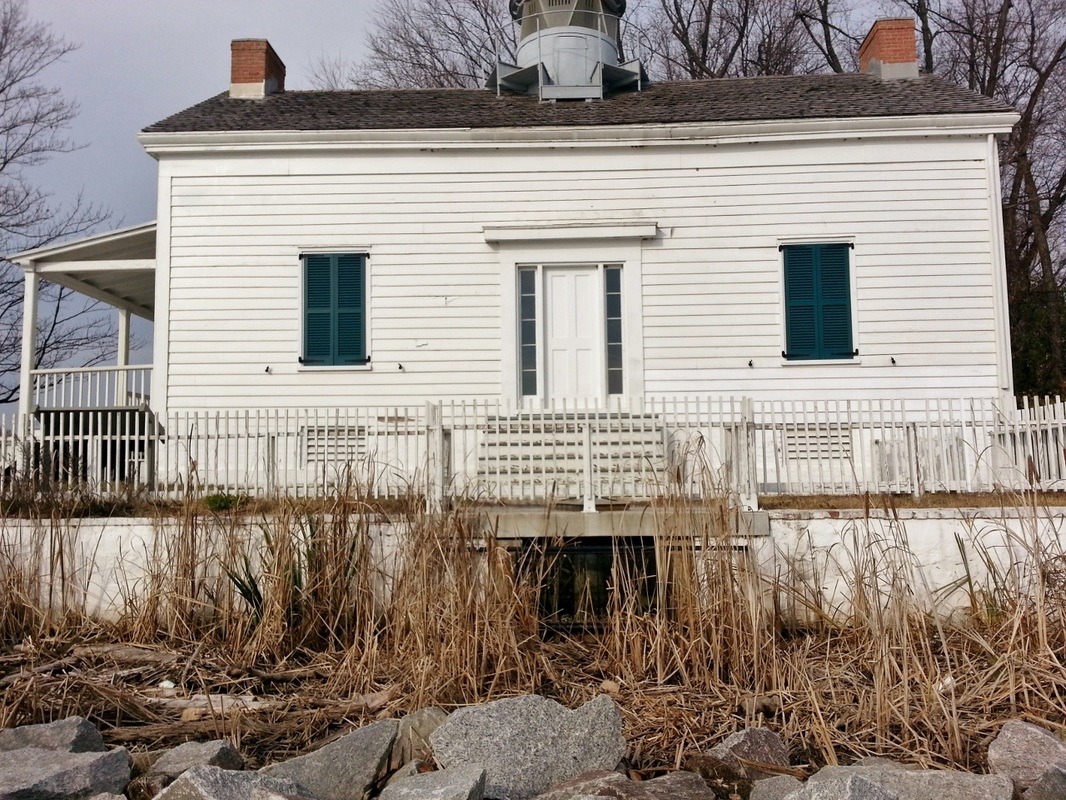It is actually a lighthouse. Believe it or not… Jones Point Lighthouse in Alexandria, Virginia. It is the southernmost point of the original District of Columbia.
I was there on December 11th, 2015, on my way to Mount Vernon by bicycle. The weather reached 70 F (21 C) and I had just finished an exam the previous day.
The red marker on the below map is anchored where the photo was taken. You can zoom in on this map all the way down. The anchor-point is exactly where I was standing, facing south.
Below: Along the Potomac River. To my right is the lighthouse. The lighthouse’s small shed is visible here (The same shed is visible in the above photo, behind the bicycle).
Completely unremarkable! No inscriptions are visible. Nothing obviously distinguishes it from a rock never touched by human hands.
“The inscription on the south cornerstone, worn by weather and water, is now illegible.” A small example of the power of Time to erase the works of man.
Say a great civilization existed long ago. Call it “Atlantis.” Say Atlantis’ monuments and buildings fell into disuse after a civilizational collapse or a mega disaster event. Is it possible that all of Atlantis’ monuments and buildings could’ve been wiped away with nary a trace left for us to find today, that all its structures became indistinguishable from natural features over time? Which leaves us with Atlantis the Legend, rather than Atlantis the Fact.
Maybe the case of the weathering of the Washington, D.C. cornerstone seems trivial. Think of it this way: Each concept or emotion is as a reservoir, and different experiences “tap in” to different extents. I may have but splashed a few drops. Shelley’s traveler, meanwhile, upon his discovery of the ruins of the statue of Ozymandias, took a headfirst dive into the very same reservoir (but it was the same reservoir):
[O]n the pedestal these words appear:
My name is OZYMANDIAS, King of Kings.
Look on my works ye Mighty, and despair!”
No thing beside remains. Round the decay
Of that Colossal Wreck, boundless and bare,
The lone and level sands stretch far away.






Peter, A nice little history lesson. Thanks.